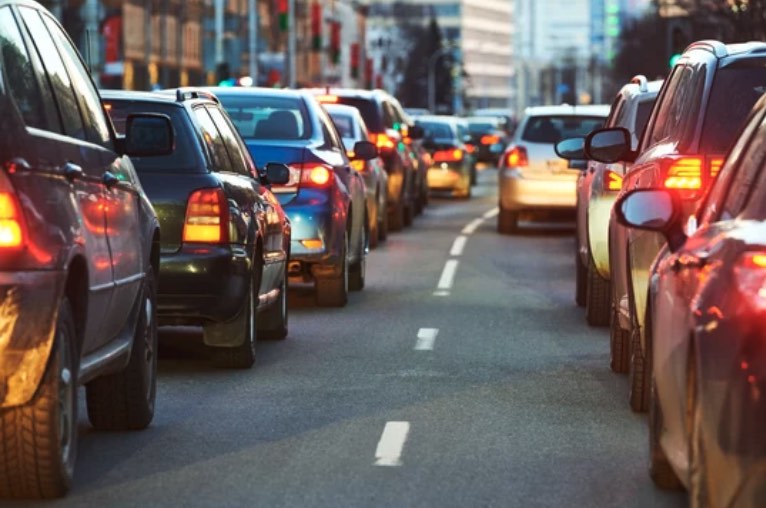You have no items in your shopping cart.

As the world becomes increasingly urbanized, it is more important than ever to be prepared for when disaster strikes.
City preppers are those who take extra steps to ensure that they are ready for anything that might happen, from power outages to evacuation situations. This requires building a few survival skills.
Here are seven tips for city preppers to ensure that they are as prepared as possible and survive. It does not matter what others think, it is a duty to think about worst case scenarios.
By following these tips, a prepared citizen can be as prepared as possible for anything that might happen.
Tip #1: Know Your City Inside and Out

One of the most important things a city prepper can do is to get to know their town in and out. This means learning about the different neighborhoods, knowing which areas to avoid, and being familiar with the city's layout.
It also means having a good understanding of the city's infrastructure and knowing where key resources are located.
By knowing their town inside and out, you will be better prepared to navigate it in an emergency.
For example, research the nearby public underground facilities and building where you can hide if you want to survive a nuclear threat.
Do you know where you can find bunkers near you? There are several options including underground mine (see this really cool interactive map), caves, federal bunkers (see what they look like here) .
Tip #2: Create a Plan to Evacuate the Urban Area
In the event of an emergency, it is important to have a plan to evacuate the urban area and identify at least one safe location.
City preppers should map out multiple routes to safety and identify safe locations to go to outside of the urban area. It is also important to have a plan for how to get transportation out of the main roads if needed.
By having a plan in place, you will be able to quickly and safely evacuate the urban area if necessary. Acquire this data before the disaster hit. Indeed, the last thing you want is to get stuck in the traffic!
It may be challenging to find relevant pdf maps of your country or area that you can print from home. Sites like PrintMaps https://www.printmaps.net and UMaps mith be extremely useful https://www.4umaps.com.
The decision to evacuate is not easily taken. But, when you decide this is the best course of action, make sure to follow a plan. Here are ideas of what your plan can contain:
-
Arrange your evacuation ahead of time. Make sure that you have a few possible destinations.
-
Plan what you take. Create a checklist of the items for the family including your pets.
-
Create a home inventory. This will be useful if you need to apply for disaster aid or simply to support your claim to your insurances.
-
Gather important documents like: prescriptions, birth and marriage certificates, passports, drivers license, social security cards, credit card details, social security cards, insurance policies, recent tax returns, job and employment information and proof, wills and deeds, stocks and negotiable certificates, home inventory.
You can also scan some of this information and save it to a USB stick or a SD card. This will reduce the weight of the documents you are carrying with you.
Tip #3: Be Prepared to Bug Out and Create a Family Bug Out Bag

City preppers should be prepared to bug out at a moment's notice. This means having a bag packed with supplies, such as food, water, and first-aid supplies.
It is also important to have a plan for where to go and how to get there. Identify safe locations outside of the urban area and have a plan for how to get there.
Additionally, create a family bug out bag so that everyone in the family is prepping to evacuate.
Make sure to research the items you will need that are specific to your area. Is there a chance that you will have to bugout during cold weather?
Extremely hot weather? The more information and data you gather in advance, the better.
There are a few necessary items and tools that a bug out bag should include:
- Food and water: store enough to last for several days, ideally three weeks or more
- First-aid kit: to deal with any injuries
- Flashlight and batteries: to help navigate in the dark
- Maps: of the streets and surrounding area
- Radio: to stay informed about what is happening
- Clothing: for protection from the elements
- Money: in case you need to purchase supplies
- Self-Defense: tactical pen, knife, gun and ammunitions (where allowed)
- Fire Kit: important to make a fire if you have to sleep outside and cook
- Emergency Blankets: multi-purpose and cheap, will keep you warm
By having these items in their bug-out bag, city preppers will have a better chance of survival in case things turn bad.
Even more important, make sure that you know how to use these items and have basic knowledge in first-aid. We offer a first-aid online course if this is something you need help with.
Tip #4: Fortify Your City Home for Ultimate Security
In the event of an emergency, you may be forced to stay home. For instance, if all planned exit routes have heavy traffic or if things are worst outside the urban area.
Fortify your home to protect yourself from looters, criminals, and other threats. This means fortifying entry points, such as doors and windows, and having supplies on hand to defend the house if necessary.
When prepping, you should also consider installing security systems and cameras to deter intruders. By fortifying your home, you will have a better chance of surviving any emergency situation. Check this short video to find out how to better secure your house doors.
@impactdefense Learn how to secure your doors👆 Visit our channel for self-defense videos.👇 www.youtube.com/impactdefense . . . #selfdefense #securedoor ♬ original sound - Impact Defense
Also, in a disaster, ordinary items in your home can cause injury and damage. Here are a few potential hazards: defective electrical wiring, leaky gas connections, heavy objects on higher shelves, flammable products, pesticides, damaged roofs, gutters or chimney.
Tip #5: Decide Which Foods and Supplies You Need to Store for Urban Survival

Folks need to make sure they have enough food and supplies stored up to survive in an urban environment. This means having non-perishable food items as well as water stored in case of an emergency.
You should also consider storing other items such as medicine, clothes, and batteries. By having these supplies on hand, you can treat minor injuries easily and keep moving in the event of a bugout emergency.
This goes without saying: do not advertise that you have a stash when things are still going well. Otherwise, you may become a target.
You can check our food storage calculator if you are concerned about prepping for long term survival .
A very popular water filtration device is called LifeStraw and can be bought for less than $20 on Amazon.
Tip #6: Have a Plan for Communication and City-Wide Coordination

In the event of an emergency, you should have a plan for communication and city-wide coordination. This means having a way to communicate with neighboors as well as officials.
Understand your network of friends or friendly services that you may need. Having this information with phone numbers and all the data, organized, might save you a precious time. Prepping ahead is always a better approach.
It is also important to have a plan for how to coordinate city-wide efforts in an emergency situation. Prepare to play an active role. Some people leverage the site Facebook to find relevant groups and a lot of free information.
A good plan should be flexible enough to be adapted to unusual situations and based on the information you get through your communication network.
Tip #7: Have a Plan for Water and Electricity Outage

A prepper should have a plan for when the water and electricity go out. This means having a way to get water and power. A generator and a massive powerbank can come handy if you are bug in. In bug out situations, make sure to have a source of current like a 10,000 mah + powerbank.
I love Jackery gear. They have super powerful 120V powerbanks and large portable solar panels.
If you need to bug in, store about one gallon per person per day of fresh water and a plan for how to purify water is essential.
If bugging out, you should have a way to filter water on the go. Make sure to have at least one litre per person of fresh water ready to go.
You should also have a plan for how to cook food without power. This may involve using a camp stove or barbecuing. The Deutch Oven technique for cooking on a campfire can come handy. This is an interesting article from my friend Helder.
Scientific American magazine has a really interesting DIY preparing a water filtration using the sun here.
Bonus Tip: Build a Home Safe Room

Most part of the United States are subject to tornados and hurricanes. It may be a good idea to build a safe room in your home. With the right construction, you can make sure that your family stays safe in the house when a natural disaster hits.

A safe room is a strong structure that can provide near-absolute protection when a tornado or an hurricane 'decides' to hit your home. To find out where to start, I recommend reading this short pamphlet produced by the FEMA (Federal Emergency Management Agency), an organization of the U.S. Department of Homeland Security.
You can find precise specifications that your builder will understand and secure at least part of your home. The FEMA website is full of support and resources to help you plan for wall thickness, attachment to the ground, stability against earthquake and so on.

Building a safe room may enhance the value of your house and is at the same time a great measure to take when thinking about urban prepping.
Some people go to even more extreme measures to ensure their security and survive. You can buy a condo in a fortified complex, made as a luxury bunker. See for instance https://survivalcondo.com and https://www.theguardian.com/lifeandstyle/2020/aug/01/3m-price-tag-inside-luxury-doomsday-bunker. The survival condo are made inside the Atlas missile silo launching pad from the cold war era.
If this is something you can afford, you may find more services than you would expect even during doomsday type events. These have a weapon room, underground pool, exercise room to ensure your physical fitness, radiation-proof air filtration systems, windows with screens to simulate a backyard, massive supplies, etc. Funny fact, no toilet paper, it would take way too much room. Instead, every condo is equiped with a bidet. Maybe something to learn from!
In Conclusion
This covers a broad range of topics but it all boils down to establishing a network of folks to share ideas with, learn from and eventually hope to trust should the need arise. Commitment: This covers a broad range of topics but it all boils down to establishing a network of folks to share ideas with, learn from and eventually hope to trust should the need arise.
By following these prepper's tips, you will prepare for a disaster that you may not have sense before. Facing a life-threatening survival urban disasters is not an easy task. Use your free time to develop these essential skills and prepare for disasters.
Having a bug-out bag with basic items, fortifying your home, and storing food and supplies are all important steps to take.
Additionally, you should have a plan for communication and city-wide coordination in case of an emergency. Lastly, make sure to have a plan for when the water and electricity go out.




